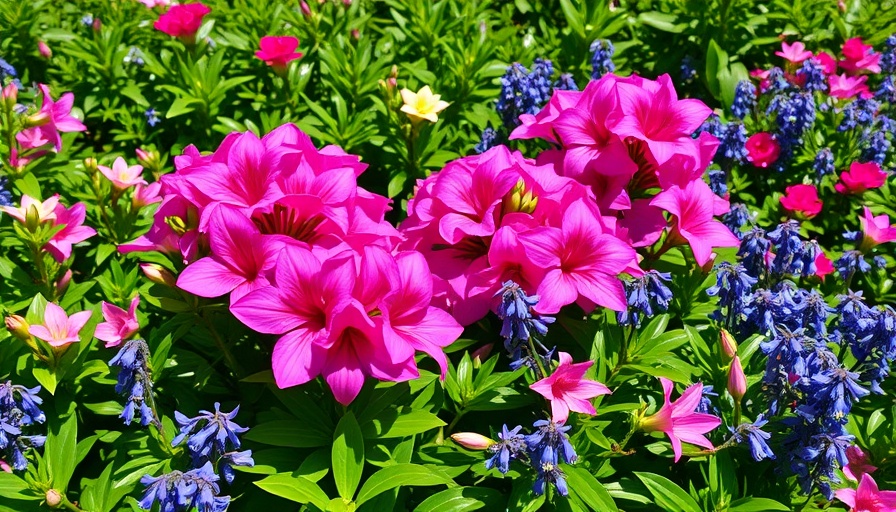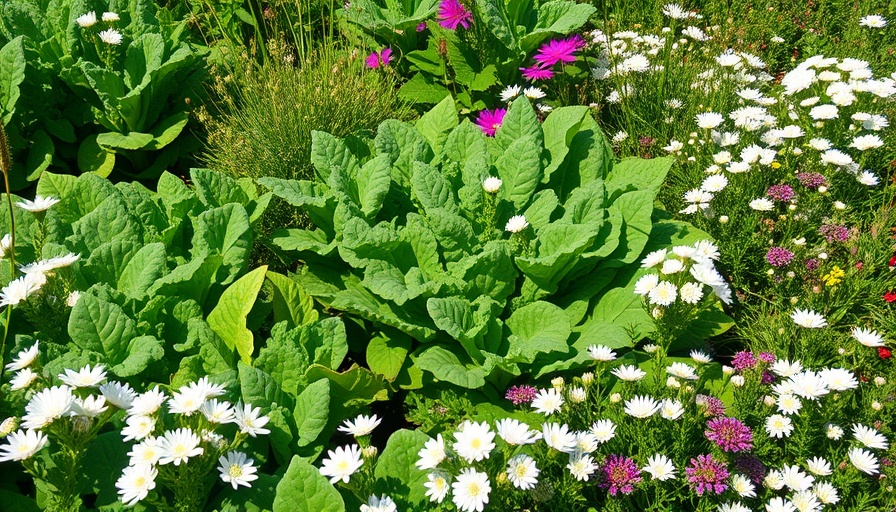
Embracing Garden Imperfections: A Trend of Natural Beauty
In a world increasingly captivated by aesthetic perfection and manicured lawns, a refreshing shift is taking place in our backyards. Imperfect gardening encourages homeowners to break free from traditional landscaping norms and embrace a philosophy that celebrates natural wildness. This trend not only reduces maintenance but also champions biodiversity through the selection of native plants that require less intervention.
What Exactly is Imperfect Gardening?
Imperfect gardening reshapes our view of outdoor spaces by pushing aside the relentless pursuit of immaculate designs. Instead of precise lines and uniformity, this approach welcomes unpredictability, embracing the beauty of asymmetry and seasonal transformations. By cultivating gardens that reflect natural growth patterns, homeowners can create vibrant ecosystems requiring minimal human intervention. This naturalistic technique promotes ecological principles and fosters a sense of ownership and authenticity in gardening endeavors.
The Benefits of Going Imperfect
Adopting imperfect gardening practices offers significant advantages both in terms of aesthetics and environmental impact. Firstly, the reduced time commitment for maintenance aligns elegantly with busy lifestyles; say goodbye to incessant pruning, mowing, and weeding. Consequently, water consumption is also noticeably alleviated, as plants develop natural growth patterns that require less irrigation. One of the most profound benefits of this trend is the increased biodiversity that emerges when native species are prioritized, cultivating a thriving ecosystem right in your backyard.
Creating Your Eco-Friendly Backyard Oasis
Imperfect gardening is inherently linked to sustainable practices that nurture the local ecosystem. To jumpstart your journey, consider these practical techniques:
- **Plant Native Species**: Begin by selecting plants native to your region, reducing water needs and improving resilience against local pests.
- **Rainwater Harvesting**: Set up a rain barrel to collect and store water, treating your garden with natural irrigation and minimizing pressure on municipal systems.
- **Compost Organic Waste**: Recycling kitchen scraps into compost enriches your soil and reduces waste, enhancing the sustainability of your garden.
These practices not only add beauty to your garden but also create a profoundly positive impact on the environment.
Celebrating the Unique Characteristics of Your Space
As the concept of imperfect gardening takes root, so does the opportunity for personal expression. Every garden becomes a living masterpiece, showcasing the quirks that often go unnoticed by traditional gardening methods. A patch of wildflowers, a flourishing herb garden encroaching on your patio, or a gnarled tree trunk—all of these imperfections tell a story and add character to your outdoor space.
Future Trends and Predictions in Gardening
As we move forward, the trend towards imperfect gardening will likely intertwine with a broader cultural shift towards sustainability and minimalism. An increasing number of homeowners may prioritize ecological function over mere aesthetics. As society grows more conscious of environmental issues like climate change and biodiversity loss, embracing the wildness of gardens could be a step towards reclaiming our connection to nature.
Conclusion: Transforming Your Backyard
Breaking free from conventional gardening standards not only creates a beautiful outdoor space but also supports sustainable practices that benefit the Earth. By exploring imperfect gardening techniques, you cultivate a unique personal haven that resonates with nature's authentic rhythms. Take advantage of this gardening trend and share your journey with others in your community. Your backyard has the potential to be an inspiring canvas of creativity, beauty, and ecological harmony. Start experimenting today and let the natural world flourish around you!
 Add Row
Add Row  Add
Add 






Write A Comment